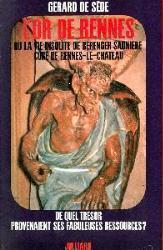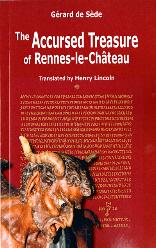A clarification and a warning
For several years now our ancient Razès has been the setting, from time for time, of fruitless searches, frantic excavations and sensational publications. The epicentre of this tidal wave has inevitably been Rennes-le-Château, extending outwards from there in concentric circles to embrace Coumesourde, Rennes-les-Bains, the plateau of Les Fées (Las Brugos), Blanchefort, Campagne-sur-Aude – in a nutshell, that old Visigothic capital which is unquestionably steeped in history but which today is to an even greater extent steeped in legend and inundated with apocryphal documents.
People are wont to state without hesitation that a treasure is hidden in a former necropolis; that the Diocese of Carcassonne is aware of the existence of this necropolis but refuses to share the secret with anyone (although that would be a way of resolving the Diocese's challenging financial problems!); that a cross raised along with several others in 1856 by Abbé Vié, curé of Rennes-les-Bains and located in the porch of the church, is full of mystery; that its dedication, Domino Vié rectore, is a rebus; that the tomb of the dear old Abbé Vié himself is an example of landscape geometry and is laden with meaning; that a painting in the church has an esoteric significance (the crown of thorns mysteriously becoming an octopus or the Gorgon's hair-do); that a sculptured head found on the plain by Abbé Boudet and which, as far as he was concerned, depicts the Christ, is none other than that of Dagobert, indeed of St. Dagobert II; that a work of piety by the same Abbé Boudet (“Lazare, veni foras!”) was pulped on the orders of the Diocese of Carcassonne – and other statements of the same kind.
The explanation of the fortune (and expenditure) of a former curé of Rennes-le-Château, Abbé Saunière, who died in 1917, ranges, in a rich spectrum of supposition, from the profits of wartime espionage to the discovery of a Visigothic treasure (or Cathar, or royal, or Templar...).
When all is said and done, treasure-hunting is a healthy pastime, even if it doesn't lead anywhere. And works of imagination, even the products of an unbridled imagination, would surely not justify any sort of warning in a publication such as Semaine Religieuse which, by its very nature, is supposed to be non-controversial!
It would however be a different matter if an author published forged documents, non-existent addresses and fabricated documents (photocopies of course), and attributed their ownership or creation to one or other of our former and now deceased clergy. One of them, our colleague Abbé Courtauly, whom we knew well, and who was a humble and self-effacing man, thus becomes, in a “publication” of 22 October 1966, a figurehead of the “French clergy (who) were on the move, and not always in the direction of Rome”! The triple misfortune is that the Abbé is dead and therefore not in a position to defend himself; that the publication in question, called “Semaine Catholique Genevoise”, is unknown to the Diocese of Fribourg and Geneva; and that this “document” (and others of the same stamp) consists only, as is to be expected, of photocopies of an original which is unverifiable and probably forged.
Until that point was reached we could regard everything with good humour. From that point on one cannot remain silent. We have now, after a long enquiry, compiled a sizeable bundle of evidence and theories. And because the reputation of our priests is a sacred matter we want to make it clear, in respect of what we have discussed above, that we will not allow them to be attacked unjustly, that we will not allow their names to be used for dubious or commercial ends, and that our Association de Défense sacerdotale (“Association for the Defence of the clergy”) will not hesitate if need be, to approach the competent authorities.
Georges BOYER, Vicar-General
|

